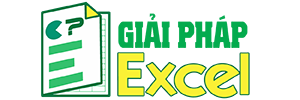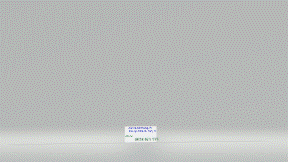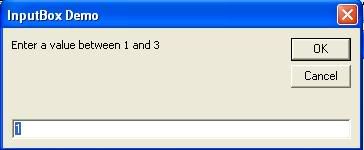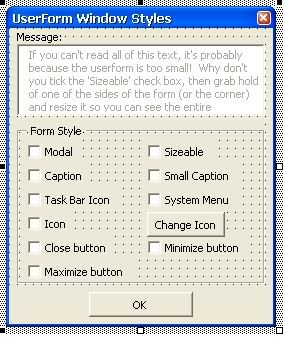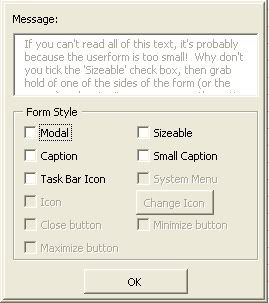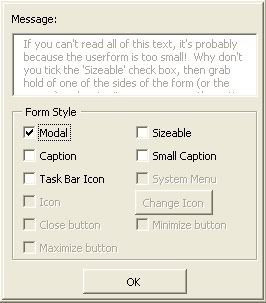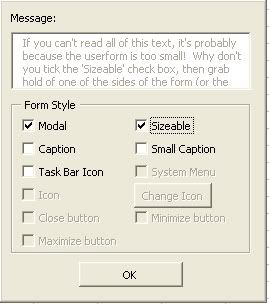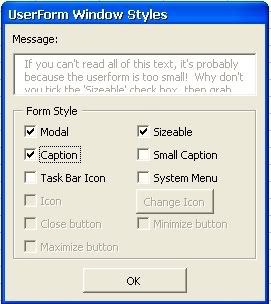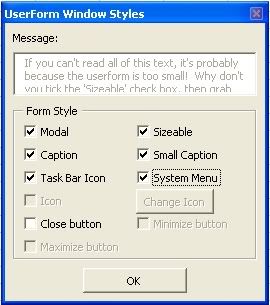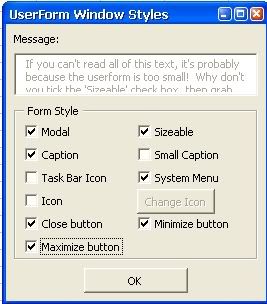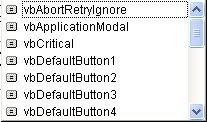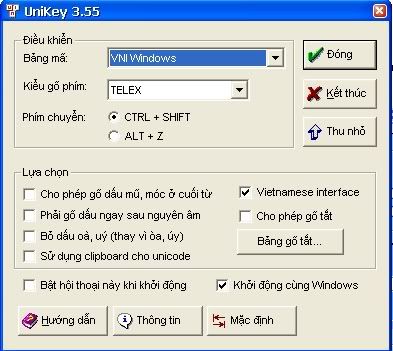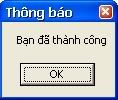- Tham gia
- 30/5/06
- Bài viết
- 1,798
- Được thích
- 4,706
- Giới tính
- Nam
Thay đổi các giá trị của một vài controls trên một form
Đôi khi trong lập trình chúng ta còn lúng túng trong việc thay đổi giá trị cho hàng loại các controls trên một form. Ta có thể dùng hàm TypeName(control) để trả về tên của control đó trước khi chúng ta thay đổi giá trị của chúng.
Các bạn tham khảo các đoạn mã sau:
Chú ý: tên control ở đây không phải là thuộc tính Name của control.

Nguồn từ ERLANDSEN DATA CONSULTING.
Lê Văn Duyệt
Đôi khi trong lập trình chúng ta còn lúng túng trong việc thay đổi giá trị cho hàng loại các controls trên một form. Ta có thể dùng hàm TypeName(control) để trả về tên của control đó trước khi chúng ta thay đổi giá trị của chúng.
Các bạn tham khảo các đoạn mã sau:
Mã:
Thủ tục sau thay đổi các giá trị của CheckBox, trên UserForm1
Sub ResetAllCheckBoxesInUserForm()
Dim ctrl As Control
For Each ctrl In UserForm1.Controls
If TypeName(ctrl) = "CheckBox" Then
ctrl.Value = False
End If
Next ctrl
End Sub
Thủ tục sau thay đổi các giá trị của OptionButton, trên UserForm1
Sub ResetAllOptionButtonsInUserForm()
Dim ctrl As Control
For Each ctrl In UserForm1.Controls
If TypeName(ctrl) = "OptionButton" Then
ctrl.Value = False
End If
Next ctrl
End Sub
Thủ tục sau thay đổi các giá trị của TextBox, trên UserForm1 thành ""
Sub ResetAllTextBoxesInUserForm()
Dim ctrl As Control
For Each ctrl In UserForm1.Controls
If TypeName(ctrl) = "TextBox" Then
ctrl.Text = ""
End If
Next ctrl
End Sub
Nguồn từ ERLANDSEN DATA CONSULTING.
Lê Văn Duyệt
